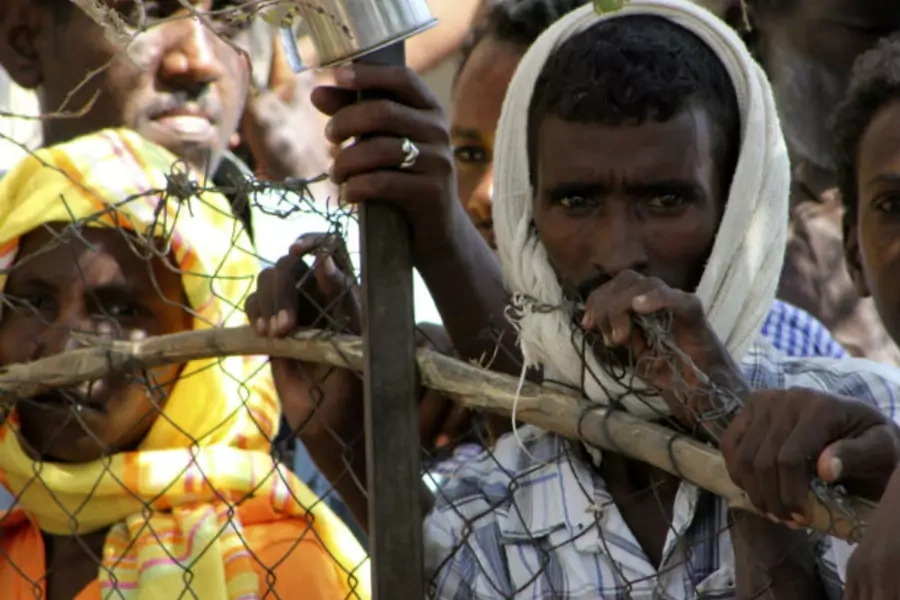More on:
This is a guest post by Emily Mellgard, research associate for the Council on Foreign Relations Africa Studies program.
The implosion of Mali and the recent abduction of a French family in Cameroon have brought heightened attention to the culture of kidnapping and trafficking in the western Sahel.
Kidnapping and trafficking are not new for people in the Sahel, however, nor does west Africa have a monopoly on the practice. Human trafficking in the Sahel, as elsewhere, has roots in widespread poverty, ineffective governments, and weak institutions.
Across the continent, well-entrenched human trafficking networks continue to operate away from the glare of the international media. More specifically, many of those trafficked in east Africa are refugees and asylum seekers from Eritrea. Eritrean refugees try to move through Sudan, with the goal of reaching Israel via Egypt’s Sinai Peninsula. Few make it to their destinations.
Trouble begins at the border between Sudan and Eritrea. Tribal communities span both sides of the national border. The Rashaida tribe in particular is notorious for bribing border officials to turn a blind eye to refugees. Once in Sudan however, rather than being escorted to safety, the Eritreans are often sold to criminal gangs, who are commonly Bedouins. The Bedouins move their victims deep into the lawless Sinai Peninsula. Due to the rocky security relationship between Israel and Egypt, the Sinai has been a de-militarized and largely un-policed region since 1979. It can be extremely difficult to successfully rescue victims.
Once in the Sinai, refugees are often subjected to repeated rape, torture, forced organ removal, and used to extort ransom. A common tactic is to torture a victim while they are connected by phone to their family, pleading them to find the money to free them. Ransoms can reach U.S. $40,000. Victims whose families cannot pay are killed or forced into servitude.
Kidnapping for ransom is not solely a west African phenomenon, nor is it necessarily a tactic of al-Qaeda or extremist groups. It is a tragic consequence of regional insecurity as a whole, weak government institutions, and pervasive poverty.
More on:
 Online Store
Online Store
